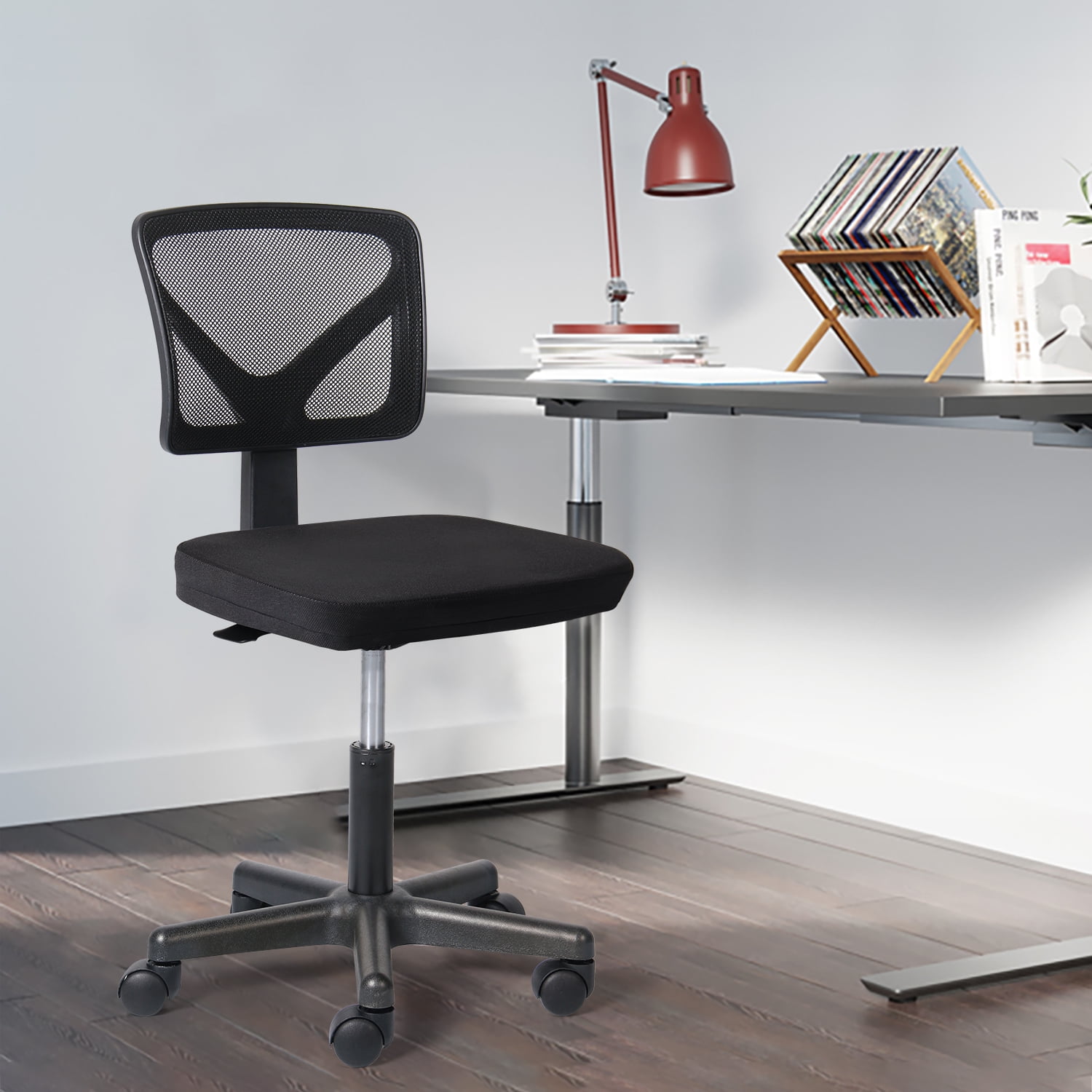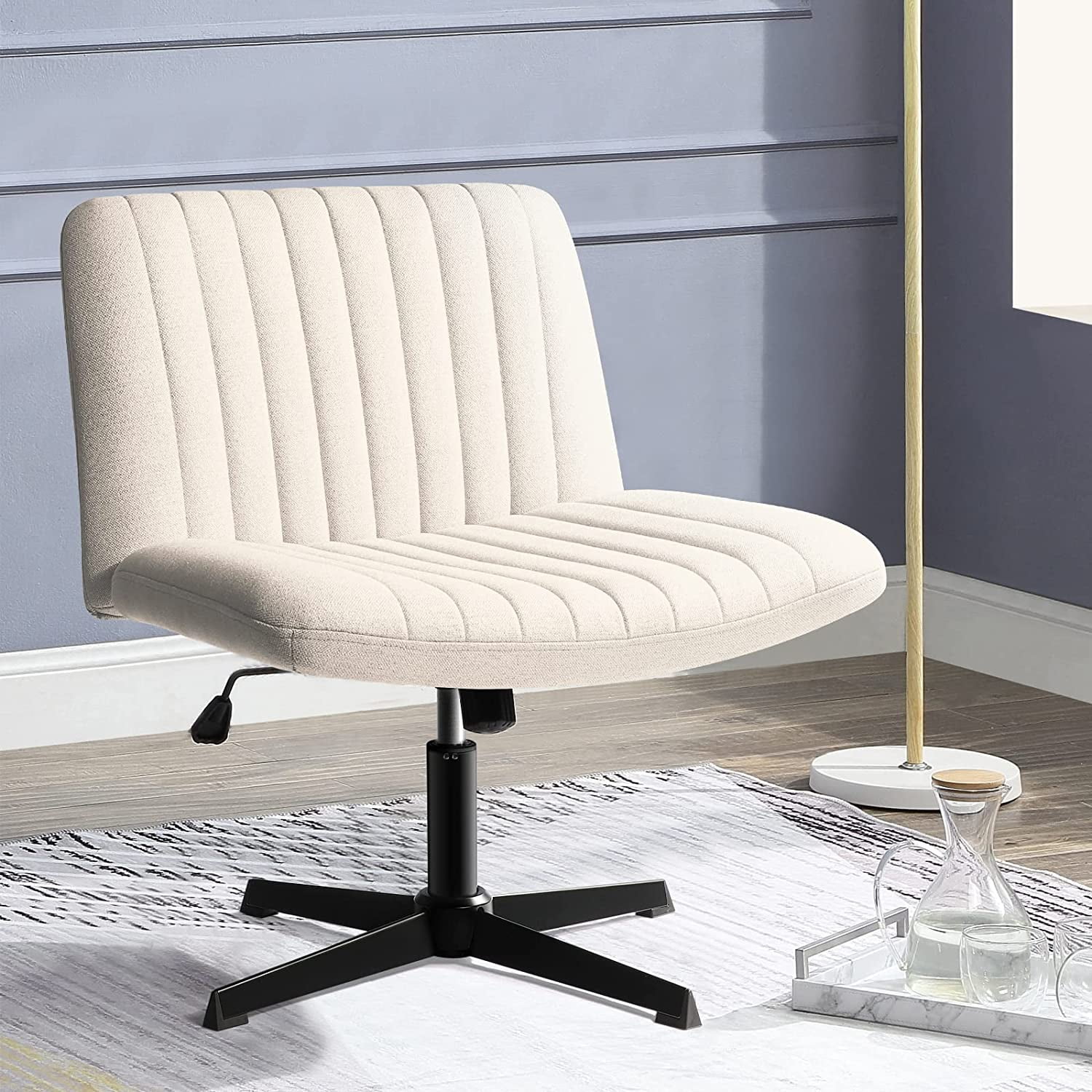Ergonomic Considerations of Armless Desk Chairs

Armless desk chairs offer a unique ergonomic profile, presenting both advantages and disadvantages compared to chairs with armrests. Their impact on posture, movement, and overall workstation setup necessitates careful consideration for optimal comfort and health. Understanding these aspects is crucial for maximizing productivity and minimizing potential musculoskeletal issues.
Posture Benefits and Drawbacks of Armless Chairs
Armless chairs encourage better posture by promoting a more upright and engaged sitting position. The absence of armrests prevents the user from slumping or leaning, forcing them to maintain better spinal alignment. However, this can also be a drawback for individuals who require arm support for comfort or due to pre-existing conditions. Chairs with armrests provide support and can reduce strain on the shoulders and neck, especially during prolonged periods of sitting. The absence of armrests may necessitate more frequent adjustments to posture and potentially increase the risk of muscle fatigue for some users. Proper desk setup is crucial to mitigate these potential drawbacks.
Ergonomic Adjustments for Armless Chair Workstations
Achieving optimal ergonomics with an armless desk chair requires careful attention to desk height and keyboard placement. The desk should be at a height that allows for elbows to be bent at a 90-degree angle while typing, with wrists remaining straight. A typical range is 26-28 inches, but this can vary depending on individual height and preferences. A keyboard tray is highly recommended, positioned to maintain this 90-degree elbow angle and wrist neutrality. The tray should be adjustable in height and tilt to accommodate individual needs. The monitor should be positioned at eye level to prevent neck strain. Consider using a footrest if your feet don’t comfortably reach the floor, ensuring proper hip and thigh alignment.
Movement and Active Sitting with Armless Chairs
Armless chairs inherently encourage more movement throughout the workday. The lack of armrest support often leads users to shift their posture more frequently, promoting better circulation and reducing stiffness. This increased movement can be beneficial for overall health and well-being. However, it’s important to ensure that this movement is controlled and does not lead to poor posture or strain. A combination of mindful movement and regular breaks is key.
| Feature | Chair with Armrests | Armless Chair | Impact on Workday |
|---|---|---|---|
| Movement Frequency | Lower | Higher | Increased circulation and reduced stiffness with armless chairs; potential for slouching with armrests. |
| Postural Stability | Higher (if properly adjusted) | Lower (requires conscious effort) | Armrests offer support, reducing postural fatigue. Armless chairs necessitate better core engagement. |
| Risk of Muscle Strain | Moderate (if improperly adjusted) | Moderate (requires conscious attention to posture) | Proper setup is crucial in both cases to minimize strain. |
| Overall Comfort | Subjective, dependent on individual needs | Subjective, dependent on individual needs and setup | Individual preferences determine comfort levels. |
User Experiences and Preferences with Armless Desk Chairs: Desk Chair No Arms

Armless desk chairs offer a unique sitting experience, diverging from the traditional support provided by armrests. Understanding user experiences is crucial for determining their suitability for various work styles and individual preferences. This section explores user testimonials, surveys, and general observations on the impact of armless chairs on comfort, support, and overall satisfaction.
User Testimonials and Case Studies, Desk chair no arms
Real-world experiences provide valuable insights into the practical implications of using armless chairs. The following testimonials illustrate the diverse perspectives of users across different professions.
“As a software developer, I find the lack of armrests encourages better posture and more frequent movement throughout the day. I’m less likely to slump or become static in my posture,” says John, a software engineer.
“For graphic design, the freedom of movement is invaluable. I frequently shift my position to get different perspectives on my work, and armrests would only hinder this,” adds Sarah, a freelance graphic designer.
“While I appreciate the increased mobility, I do find myself experiencing some shoulder and neck tension after prolonged use. I’ve had to compensate with better ergonomic practices and more frequent breaks,” comments Michael, a writer.
Survey Questions on Armless Chair Satisfaction
To comprehensively assess user satisfaction, a structured survey can effectively gather data on specific aspects of the chair’s performance. The following questions target key areas of concern:
1. Comfort: On a scale of 1 to 5 (1 being very uncomfortable, 5 being very comfortable), how would you rate the overall comfort of the armless desk chair during a typical workday?
2. Lumbar Support: How effective is the lumbar support provided by the armless desk chair in preventing back pain or discomfort? (Excellent, Good, Fair, Poor)
3. Postural Support: Does the armless desk chair encourage or hinder good posture? (Encourages, Neutral, Hinders)
4. Mobility: How would you rate the chair’s impact on your ability to move and adjust your position while working? (Very Positive, Positive, Neutral, Negative, Very Negative)
5. Overall Satisfaction: Considering all aspects, how satisfied are you with the armless desk chair? (Very Satisfied, Satisfied, Neutral, Dissatisfied, Very Dissatisfied)
Observations on User Preferences
Armless chairs appeal to individuals who prioritize movement and a less restricted sitting posture. However, the absence of armrests can lead to discomfort for some users, necessitating adjustments in posture and work habits to mitigate potential issues. The optimal choice depends on individual needs, work style, and ergonomic considerations.
